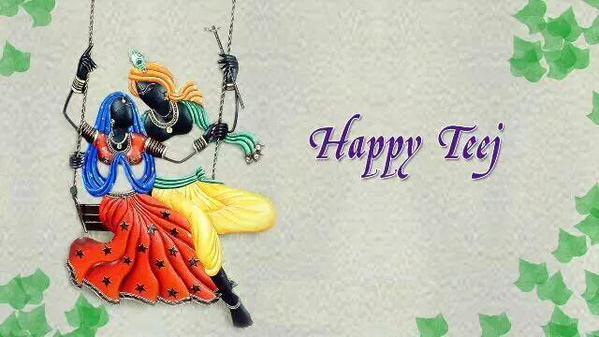Sawan & Teej
The Holy Sawan Month & Teej
With Teej celebrated tomorrow and Rakhi round the corner, the festivity mood in Uttarakhand is upbeat. In the market place especially, mehndiwalas can be seen sitting outside shops attending to gaily attired ladies awaiting their chance to get their hands hennaed. The advent of the monsoon season too has filled the air with love and romance, and rejoicing. Teej festival heralds the beginning of monsoon season and spreads greenery all around. It is celebrated in the month of Sawan, which brings a great relief from the scorching heat of summers.
Recalls an octogenarian, Mridula Kashyap, “I remember that in the good old days, the moment the first drops of monsoon rain fell, swings would be hung on trees, and we would love to dance and sing and make merry Now all those trees have gone. Our courtyards and gardens have become bereft of trees ad greenery. One way of dealing with the menace of tree cutting is to promote the concept of swings on trees at home. Children will just love it. They can then dance and play in the rain, which is an amazing experience. It would be one of those eco-friendly ways of spending time fruitfully”
Seema Rathi, a young modern Doonite, states that though she may not be well informed about the rituals attached to this festival, she does make it a point to apply mehndi and bring some ghewar (sweet) home, which her kids relish. She adds, “I recall my mother going out of her way to get bangles for her niece, though her brother and bhabhi were divorced, But the niece had a soft corner for my mom who was her Bua, and she would meet her secretely. I would then wonder what this gifting of bangles meant. Now in retrospect I can say that festivals such as Teej lead to a lot of bonding amongst relatives.”
Mamta Sharma says that she has two married daughters whom she sends money in Sawan to buy sindoor, bangles and sarees. She exclaims, “I also wish for their happy married life and ask them to buy something for my sons-in-law as well. I want them to visit us during sawan and get our blessings. It is auspicious to exchange gifts during sawan. Not many know that Teej is dedicated to the divine couple-Lord Shiva and Goddess Parvati. The two are said to have united after years of penance. So in a way, it is also a celebration of love. It is a feel good festival that helps in familial bonding.”
Though the tradition of singing sawan songs is on the decline amongst the modern generations, it is the clubs and mohalla groups that have kept alive the tradition to some extent. Modern mothers hardly know sawan songs, but they do encourage their daughters to participate in school functions wearing brightly coloured lehengas cholis and bedecked with flowers. “The schools in this regard can be considered as repositories,” comments a senior lecturer in a local college. “I remember when we were in school, we learnt the famous Punjabi number “ral aao sahio ni.”
Veronica and Linya, two Germans who are visiting Doon too got the taste of the Indian tradition. They loved the ghewar and applied mehndi and wore salwar kameej and bangles and paid a tribute to the occasion. During sawan and Teej, women, so as to be blessed by Goddess Parvati, follow certain rituals and customs. Married women return to their parent’s house to celebrate the festival of Teej. It is considered very auspicious for married and engaged women to receive Teej gifts from their parents-in-law and future in-laws. Future in-laws, of girls engaged to be married, gift them Shrinjhara (a gift pack) which consists of henna, lac bangles, a special laheria dress and ghewar (a sweet dish). Women from their relatives and in-laws also receive other gifts. We may not spot ladies enjoying the rains on swings, but the spirit of sawan is in the air.


0 Comment